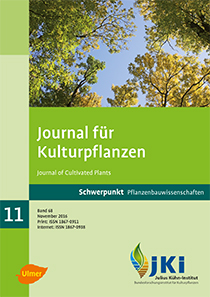Effect of mineral fertilization on C and N contents in soil of long-term fertilization trials in Halle/Saale (Germany)
DOI:
https://doi.org/10.5073/JfK.2016.11.02Keywords:
Long-term fertilization trials, mineral fertilization, carbon, nitrogen, humusAbstract
In five long-term fertilization trials in Halle/S. (Eternal Rye, field F1a, field F1b, field F2a, Soil Formation Trial), mineral fertilization (NPK) compared to the unfertilized variant as well as increasing N rates (0–400 kg N/ha) have shown an increase of the C and N contents in the soil. This increase is closely related to the last year’s crop yields. It has mainly been effected by the crop residues in the soil. The mineral fertilization contributed to the preservation and improvement of humus content and soil fertility. In the field trials in the last decades, all variants have shown a decrease in soil C and N contents regardless of the fertilization. The reasons for this was mainly the continued deepening of the ploughed layer and a reduce of the C- and N-emissions. The interdependency between plant growth and humus content is rather expressed by the plant yield determining the humus content much more than vice versa.
Downloads
Published
Issue
Section
License
The content of the journal is licensed under the Creative Commons Attribution 4.0 License. Any user is free to share and adapt (remix, transform, build upon) the content as long as the original publication is attributed (authors, title, year, journal, issue, pages).
The copyright of the published work remains with the authors. The authors grant the Journal of Cultivated Plants, the Julius Kühn-Institut and the OpenAgrar repository the non-exclusive right to distribute and exploit the work.







